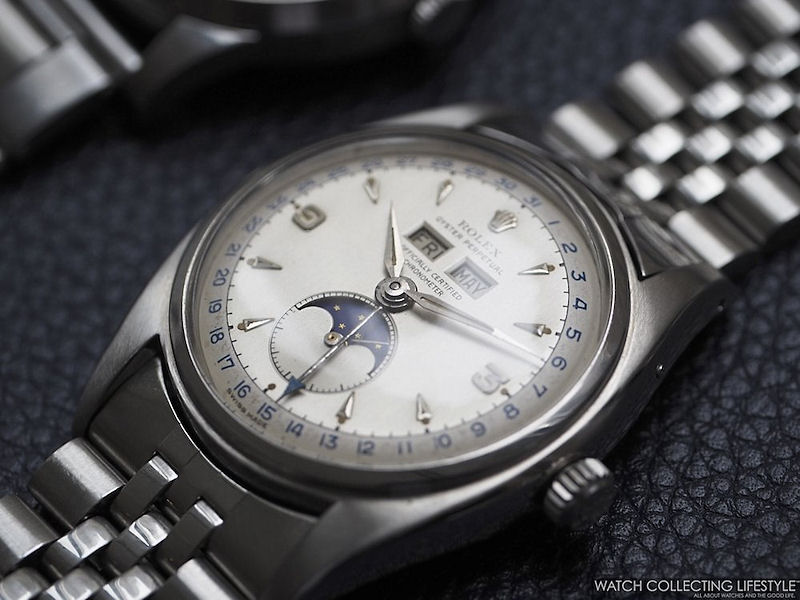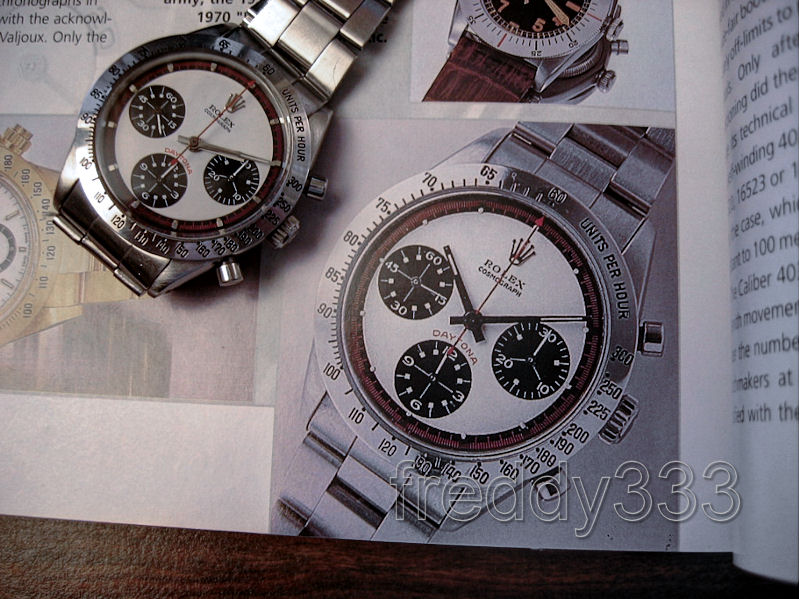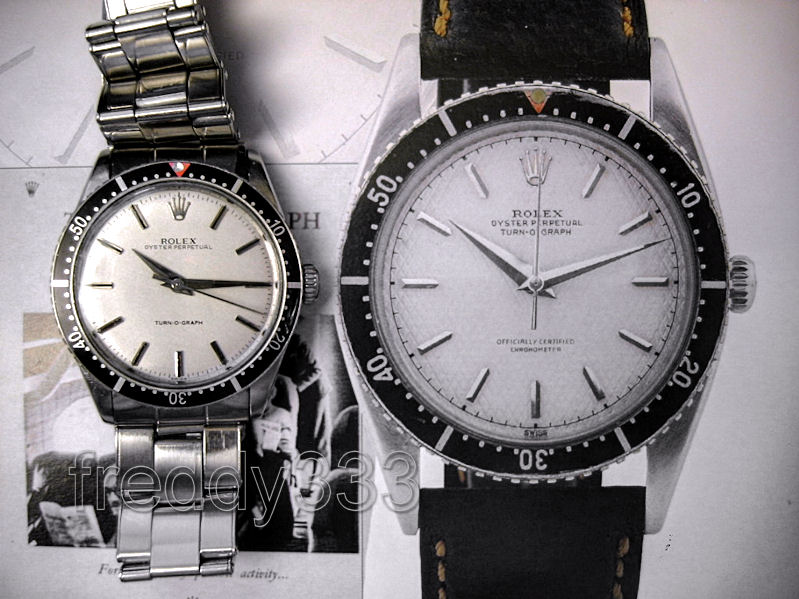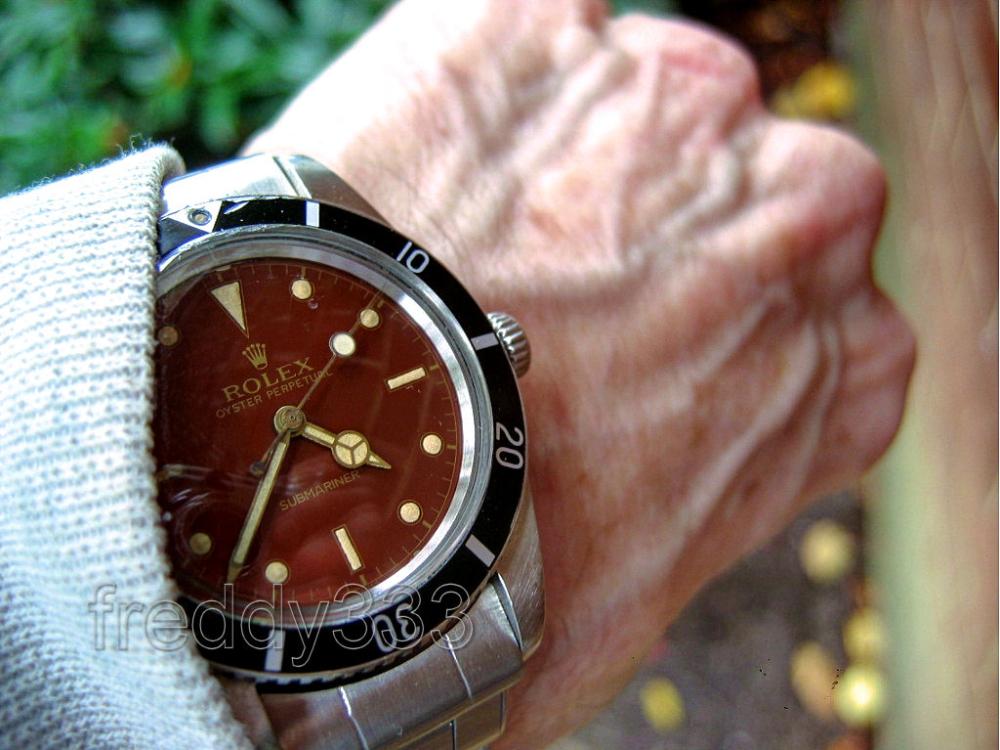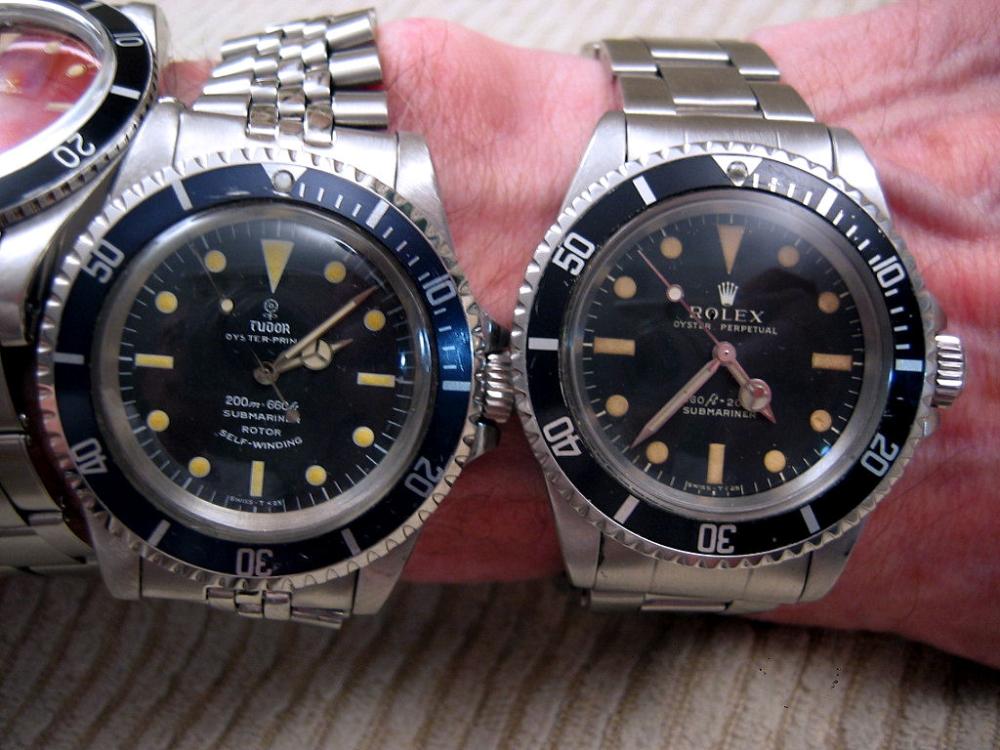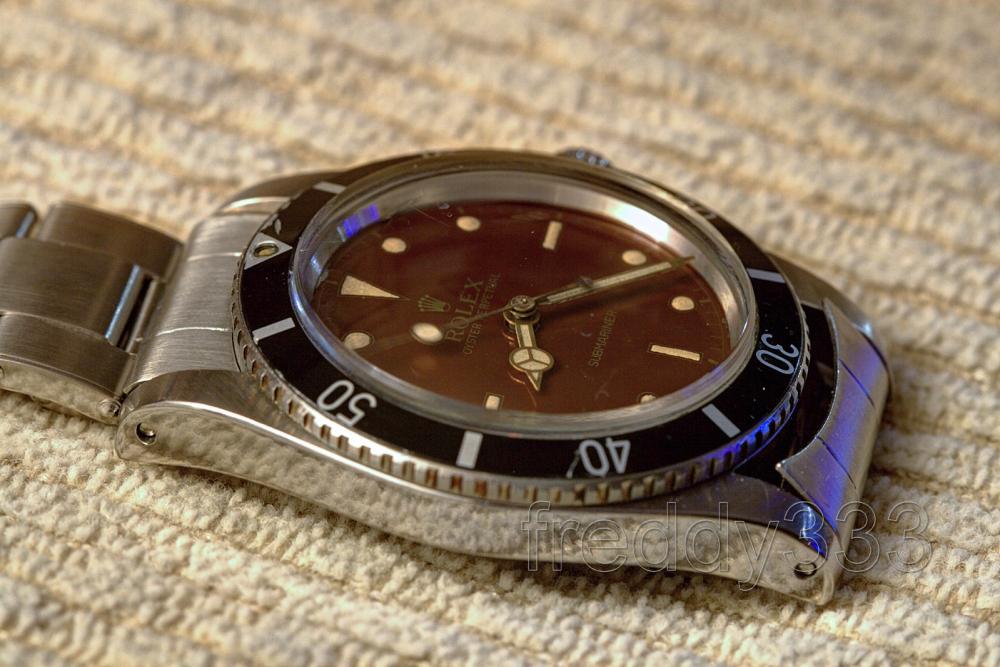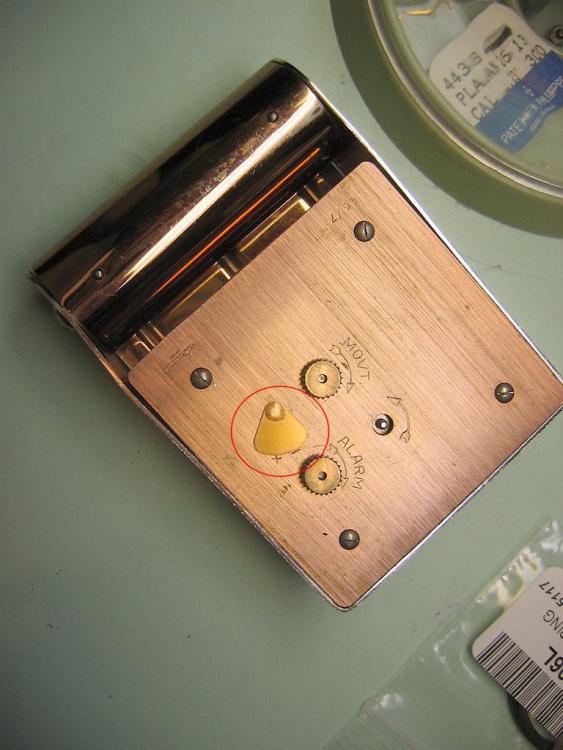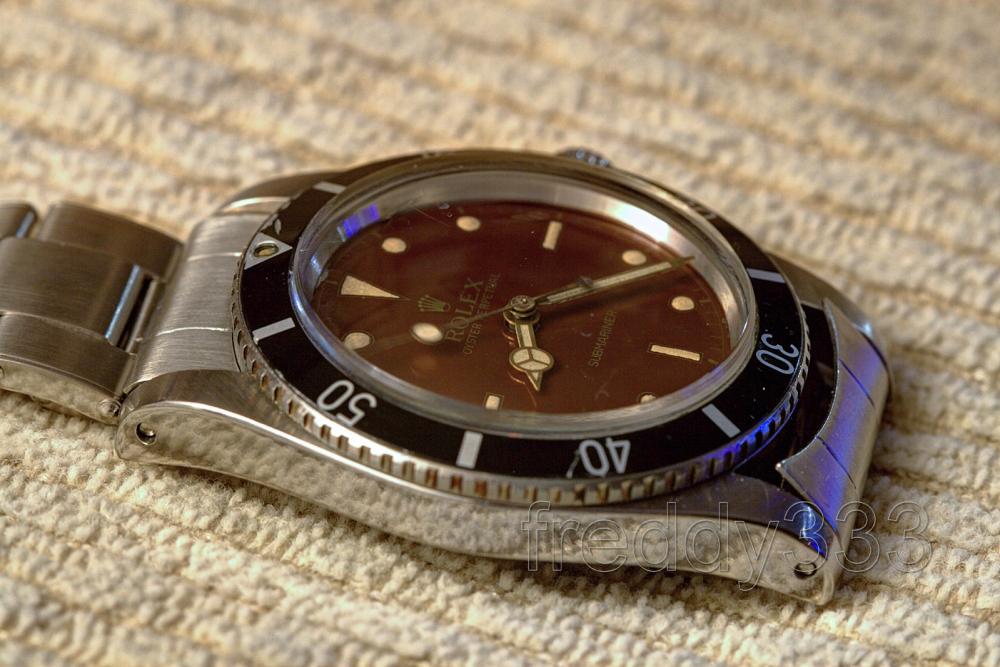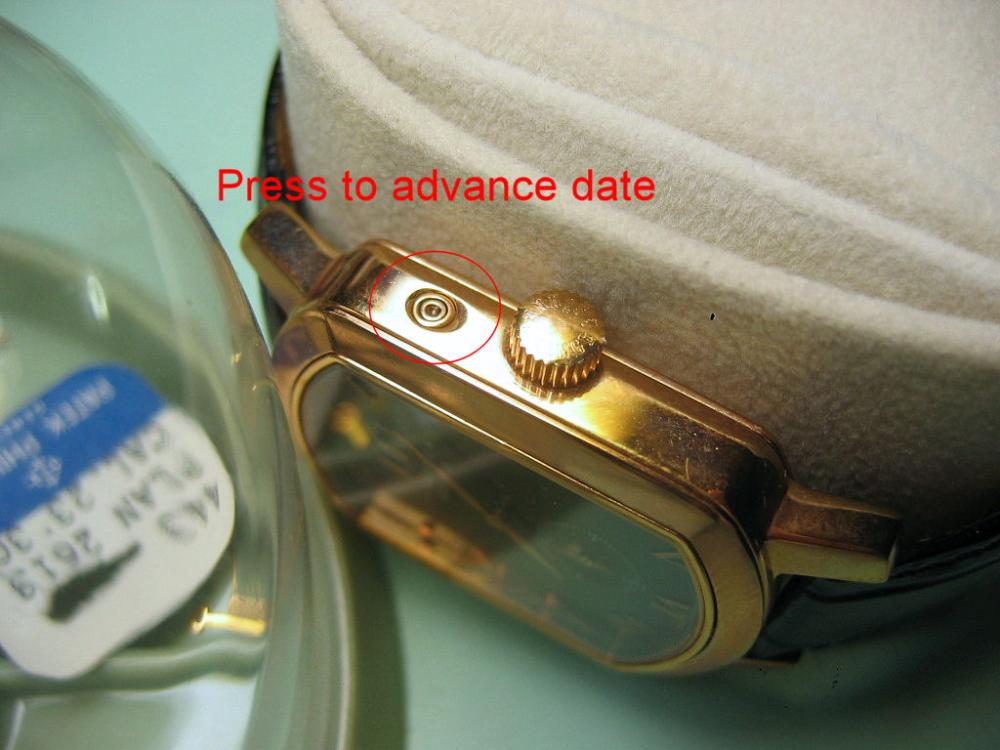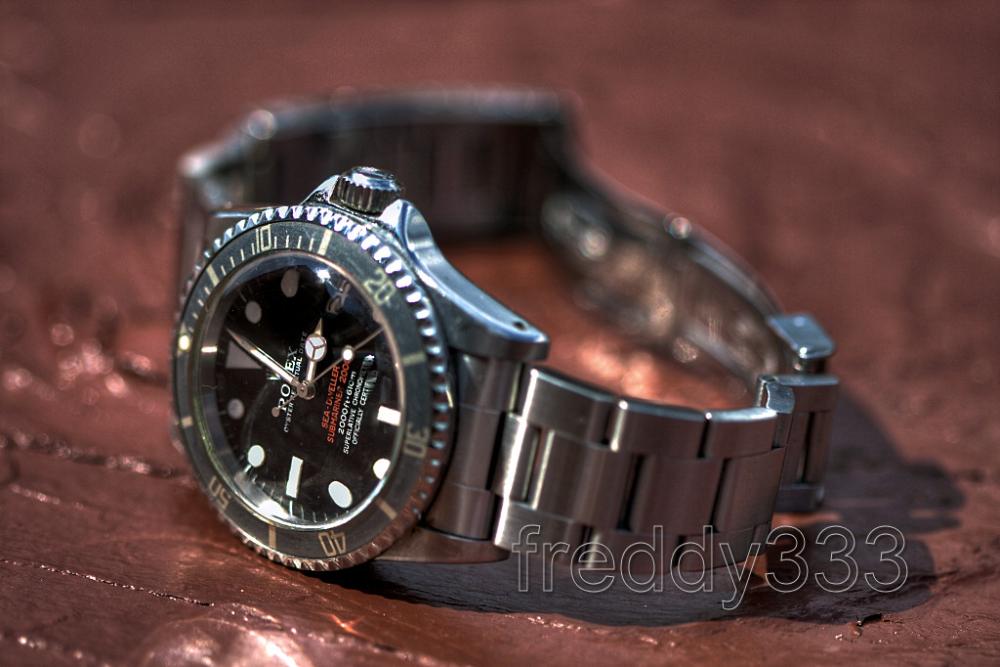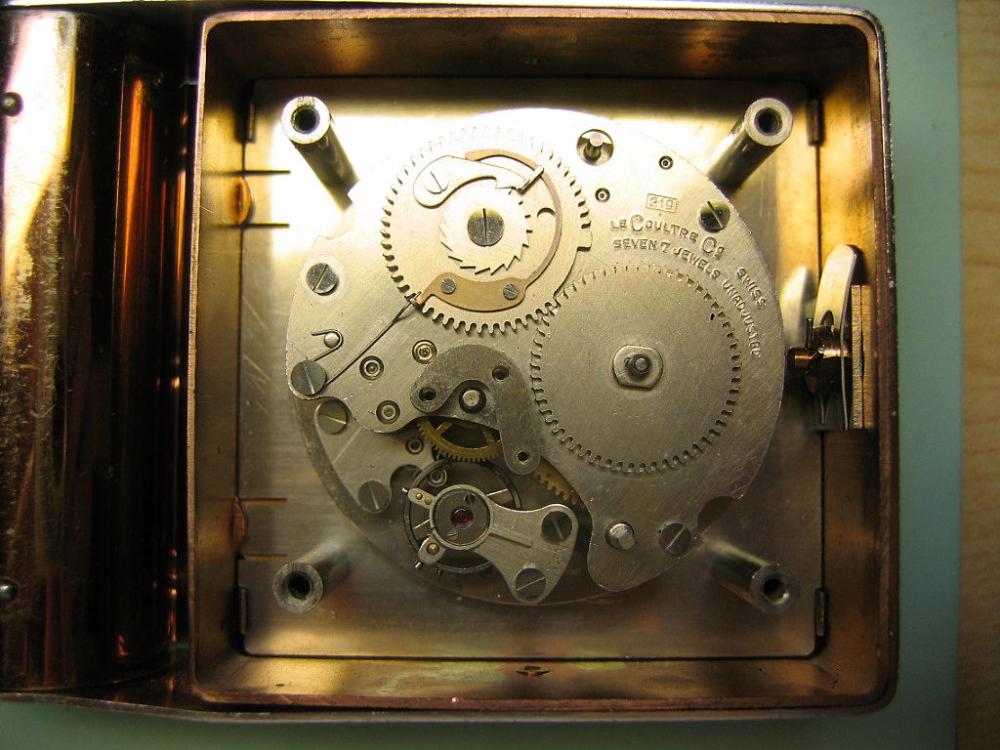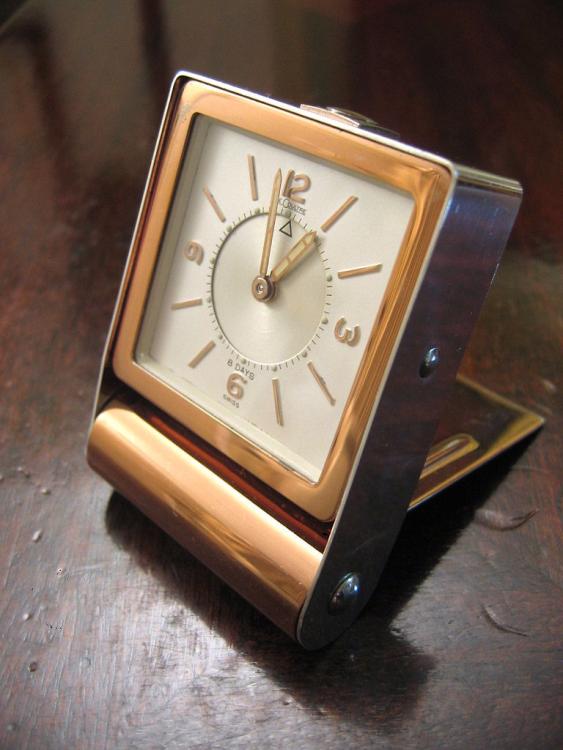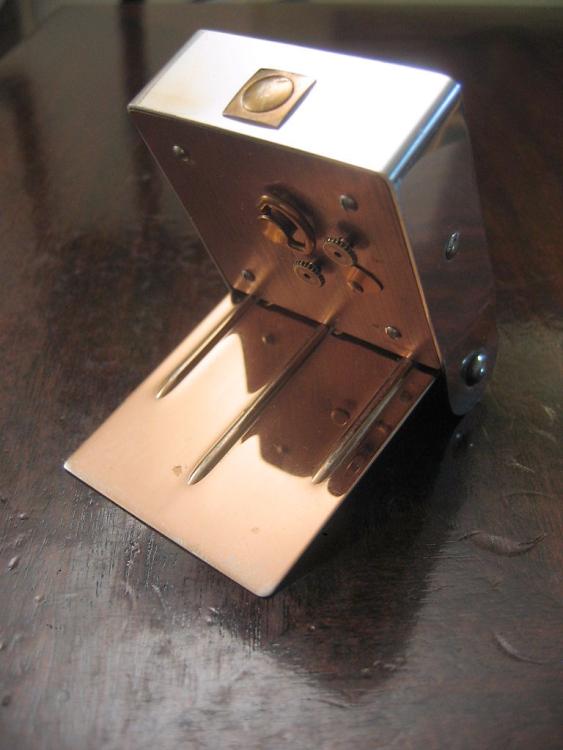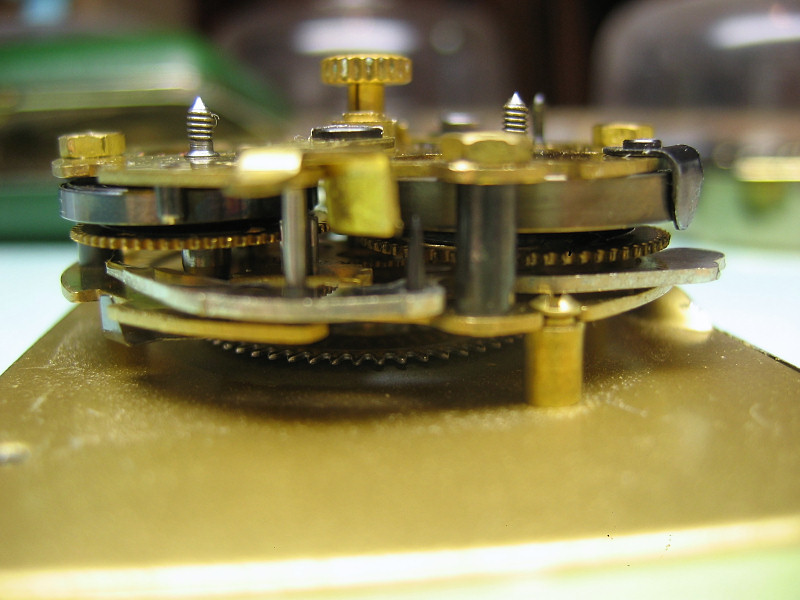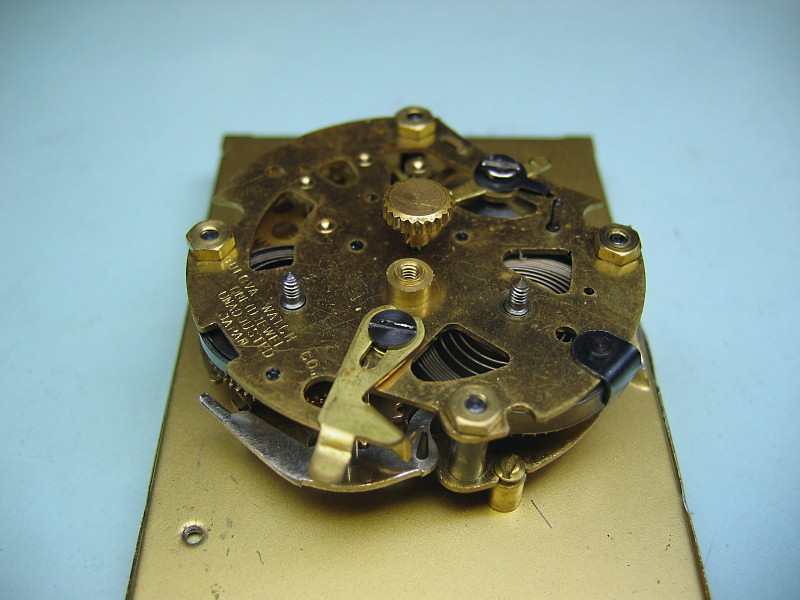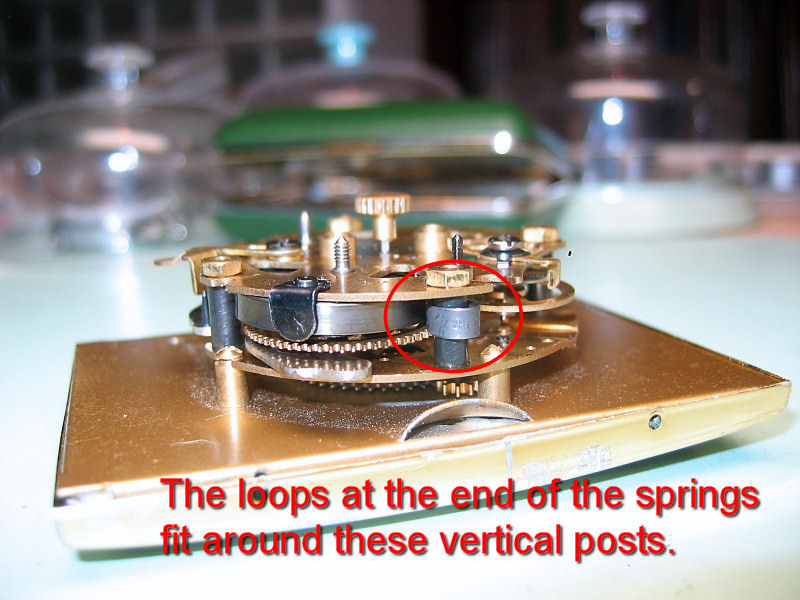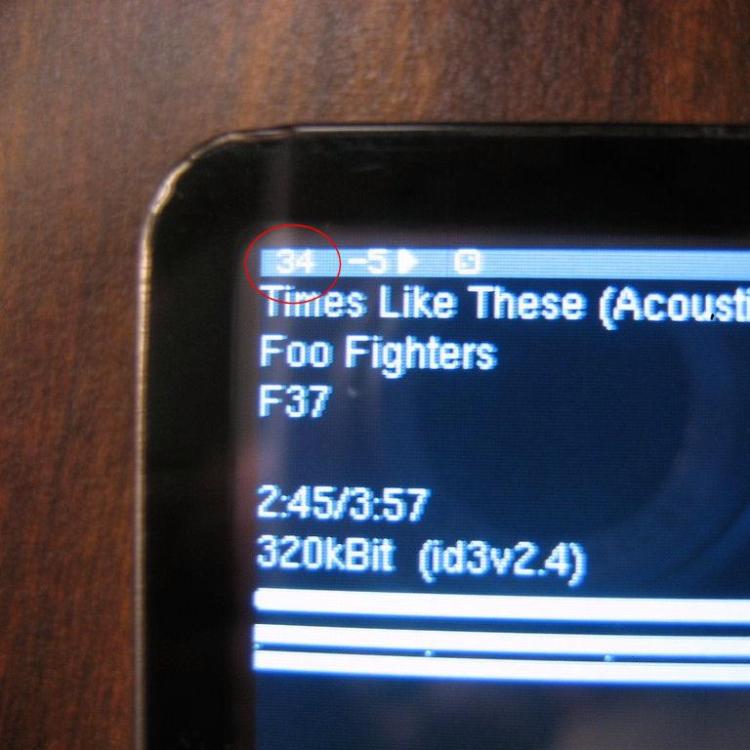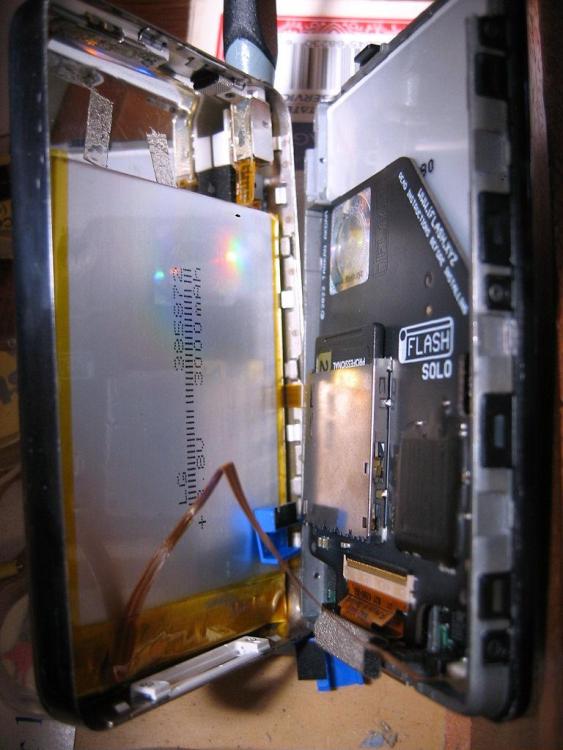-
Posts
15,787 -
Joined
-
Last visited
-
Days Won
194
Everything posted by freddy333
-

Your three favorite vintage Rolex models...
freddy333 replied to automatico's topic in The Rolex Area
-

Anyone ever seen one of these balance wheels before?
freddy333 replied to horologist's topic in General Discussion
This does not look familiar, but because of the decorated cock & uncommon balance wheel, I do not think it is ETA. Your best bet is to search google for similar designs, or post the pic on nawcc's website to see if another collector recognizes it. -
-
-

Anyone experience their watch not winding nor keeping power?
freddy333 replied to Timelord's topic in General Discussion
Then, unfortunately, you may have a broken mainspring or, in rare cases, a wheel with missing teeth (the mainspring winds until the broken gear/wheel hits the missing teeth & slips). I cannot think of anything else that would cause the crown to feel like it is slipping when winding. -

Anyone experience their watch not winding nor keeping power?
freddy333 replied to Timelord's topic in General Discussion
Click me -

The Rose and the Shield. a tale of two Tudors.
freddy333 replied to JSebWC's topic in The Rolex Area
I have always loved the rose Tudor Subs (I think they are more attractive than Rolex's own Subs), but the shield dials always look like homage watches for some reason.- 12 replies
-
- 2
-

-
- tudor ranger
- 7995
-
(and 1 more)
Tagged with:
-
I am more familiar with vintage Subs & it is difficult to tell based on this pic, but I think it is genuine. The tells are the sharp 90 degree drops from the center section of the endlink to either of the 2 side faces of the endlink (reps always round this angle) & the cyclops that appears to be properly anti-reflective coated (inside) which all but eliminates the reflections you see all over the crystal except in the date window. AR'ing a cyclops is a relatively expensive process for a rep & I have not seen any reps that came with an AR'd cyclops. Unless this has changed in the past 10 or so years, you would need to source a gen Rolex crystal (which comes with an AR'd cyclops) & swap the rep crystal for the gen to get that look. The gen crystal, if you can source 1, would likely cost as much or more than the rep watch. But, to be sure, you would need to open the case & verify the calibre. A couple of good, clear macros of the movement, with the rotor 180 degrees apart would help.
-

le Coultre 46 Folding Alarm Clock User Manual
freddy333 replied to freddy333's topic in General Discussion
If you are referring to the clock's caseback, the only part that slides is the triangular regulator cover, which is labeled "+ -" &, when slid open, reveals the regulator stem on the balance cock. -
You know you are tainted when you have so many nice timepieces that something like this 6536/1 (which was 1 of Nanuq's favs) gets lost in the crowd. Well, it found its way onto my wrist for the 1st time in ages today, so I thought I would shoot a quick pic --
-

I am not too slick (perpetual calendar fail)
freddy333 replied to Quiglda's topic in General Discussion
Different movements operate differently & without knowing the specific movement, I can only provide generic recommendations. Most complicated watches have some type of pusher or small button on the side of the case (look for a ball-point pen tip sized button on the side of the case) that you press (with a ball point pen tip) to advance the numbers on the dial. In some cases, this may be accomplished via the crown(s). If whatever control you used to advance the year does not offer a way to turn back the year, then either there may be another control for that or you have to keep advancing the year until you reach the limit of the underlying date wheels (eg, 2222 or 9999) & keep advancing until you reach 2022. If you just purchased the watch, the seller should know how it operates. I would think that would be the best place to start. -
-

I am not too slick (perpetual calendar fail)
freddy333 replied to Quiglda's topic in General Discussion
Since it IS 2022, I do not understand the problem? What year should it be? -

le Coultre 46 Folding Alarm Clock User Manual
freddy333 replied to freddy333's topic in General Discussion
Hi Tribal. Good to see you again! Reference 46. Before posting here, I did alot of research via watch & clock forums & google. Unfortunately, I only found this page about the 46, but it does not contain what I need -- instructions on how to operate the alarm. In fact, I found the article you posted above. But the clock in that page contains a JlC pocket watch movement (911). The movement in the 46 is a calibre 219, which is a clock movement. I have the JlC tech papers for the 219, but they are just a parts listing & provide nothing about the function of the clock itself. Ideally, I would like to track down either an owner's manual for the 46 or a JlC book that contains details about it. Thanks for the help. The 46 is 1 of a number of folding travel clocks Jaeger-le Coultre sold in the 1950s, most were covered in fine leather. Two years ago, Hodinkee produced a version of these clocks using a small number of the original movements in modern, leather cases. Because of the high price of the Hodinkee clock,it caused quite a ruckus when they released it. If anyone is interested, you can read more about the Hodinkee clock here. Pricing aside, I think it is a pretty interesting story that anyone with an interest in mechanical timepieces would appreciate. -
Anyone know anything about this le Coultre Reference 46 folding alarm clock? Specifically, I'm trying to figure out how to operate the alarm or locate an owner's manual for same. I just finished overhauling this clock and the alarm works (it goes off when I run the hands through a complete, 12-hour cycle), but I do not know how to enable/disable the alarm? The alarm stop (top button) works, as does the built-in alarm shut-off timer (it automatically stops the alarm after about 20 seconds), but I cannot figure out how to manually enable/disable the alarm? The clock does not have an alarm switch or control of any kind, so I am thinking that the alarm may get enabled when you run the alarm setting disc (center of dial with painted black arrow) through a complete, 12-hour cycle. But this is just a guess & I would like to know for sure.
-
Does anyone with experience working on clocks know how to wind small alarm clock mainsprings? Is there a winder or trick to getting springs like these installed back into a clock movement? They are much too large when unwound. The wheels they are attached to are about 3/4" & 7/8" in diameter, which is about the size the springs are when installed in the movement. They are normally wound with keys that screw onto the arbors and fit through the back cover of the alarm clock.
-
Admin - 2022 continues to be a year of unpleasantries all around. Sorry to hear of your unfortunate experiences, but you are certainly not alone in those. I wish you much success with your future endeavors. RWG has certainly been a bright spot for many of our lives. Thank you (& Bob) for that.
-

Building a gen like 1680 with genuine Parts?
freddy333 replied to nick1972's topic in The Rolex Area
I cannot tell you which movement will fit your particular case. If you know the source (seller) of the case, check with them. Many, but not all, ETAs will fit many of the better rep cases. But the only other way to find out (other than asking the seller) is to try installing a movement. It has been a few too many years since I built the last ETA-powered Sub, but I seem to recall that the ETA 2846 was the most appropriate overall. I believe that was the movement I used for my Phase 1 6542. Hopefully, someone with more current experience can chime in with more relevant input. Good luck. -
Another Update -- 5 hours later (been running for about 35 hours so far) & the 5G still indicates 25% battery left. So this thing is likely to run Rockbox, which is a power hog compared to the Apple OS, for 50+ hours on a single charge! I was getting 6-7 hours with the 5G running Rockbox with the OEM battery/60G hdd. These results are way beyond my wildest expectations! And because the 5G version of Rockbox now provides for 3,000mAh batteries, I think the modded 5G is my little radio station's new daily driver. Just fyi -- the sound quality of either of these ipods, whether OEM or modded, is better than the best you will hear out of any smartphone. So if you are an audiophile & want to take your music with you, I would highly recommend these mods. So far -- assuming you do not break something in the process -- other than the cost of the hardware (Rockbox is free) & an hour or 2 of your time, there are 0 downsides.
-

Has anyone ever removed a Kif A (Flector) shock spring?
freddy333 replied to horologist's topic in General Discussion
All of these cap jewel springs are nightmares, whether captive or not. I would rather sort out a box of badly mangled hairsprings than r&r a single cap jewel, because they so frequently pop-off (& fly who-knows-where) when you least expect it. But if you do enough of them, they become more pitfall than nightmare. Good luck & remember -- practice, practice, practice. Both Ziggy & I (& possibly others) posted tutorials on these back in the day, but alot of those old threads have been relocated, so they may be difficult to locate these days. Pity, there was a wealth of really useful watchmaking guides that used to be a quick search away. -
An Unexpected Update -- The 5G's been running for nearly 30 hours & the battery indicator still reads --
-
Final Update -- 5G has been fitted with its 3,000mAh LG battery & 128Gb microSDXC card and all is working well. The blue square bits near the fold at the bottom are rubber spacers that fell out while I was taking the picture. They sit on either side of the docking connector at the bottom of the ipod & were replaced prior to reassembly. Unfortunately, the CF drive/card would not fit in the case comfortably. At least I was not comfortable with having to apply some modest force to get the caseback to clamp closed. It probably would have been alright, but I was worried about damaging something if/when I had to open the case. Strangely, although the 5G functions much faster than it did with the OEM hdd (it is now similar to the 3Gs with their CF cards), its transfer speed when uploading 4,000 songs from my PC to the 5G slower than its OEM hdd. On the positive side, Rockbox for the 5G offers battery capacity display options to go up to 3,000mAh, so I am hoping its battery capacity display will be a bit more accurate than the 3Gs, which read 0 charge after about 14 hours even though they have some number of hours of additional run time left. I finished installing everything Friday afternoon & have been running it & testing features since then. It has not missed a beat or displayed any malfunctions. The 5G has been running on its new 3,000mAh LG battery for about 18 hours & the battery still reads 62%! So, once again, this project looks like a complete success! I still cannot decide whether the 3G or 5G sounds better. They do sound a bit different, but the difference is not significant enough for me to make the call 1 way or the other solely based on that difference. However, I suspect the 5G is going to run circles around the 3Gs in run-time (pun intended), so that, along with the 5G's improved display, may be the deciding factor. Time will tell.
-
Mass shootings are just crazy.

